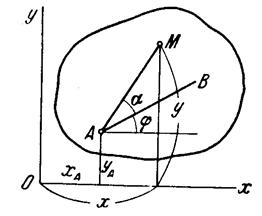
Заглавная страница Избранные статьи Случайная статья Познавательные статьи Новые добавления Обратная связь КАТЕГОРИИ: ТОП 10 на сайте Приготовление дезинфицирующих растворов различной концентрацииТехника нижней прямой подачи мяча. Франко-прусская война (причины и последствия) Организация работы процедурного кабинета Смысловое и механическое запоминание, их место и роль в усвоении знаний Коммуникативные барьеры и пути их преодоления Обработка изделий медицинского назначения многократного применения Образцы текста публицистического стиля Четыре типа изменения баланса Задачи с ответами для Всероссийской олимпиады по праву 
Мы поможем в написании ваших работ! ЗНАЕТЕ ЛИ ВЫ?
Влияние общества на человека
Приготовление дезинфицирующих растворов различной концентрации Практические работы по географии для 6 класса Организация работы процедурного кабинета Изменения в неживой природе осенью Уборка процедурного кабинета Сольфеджио. Все правила по сольфеджио Балочные системы. Определение реакций опор и моментов защемления |
Part 1. Determination of the Path of a Point of a Body
Let us now investigate the motion of individual points of a rigid body, i.e., determine their paths, velocities and accelerations. For this, as has been shown, it is sufficient to analyze the motion of the points lying in section S. We shall begin with the determination of the paths. Consider a point M of a body whose position in section S is specified by its distance b = AM from the pole A and the angle BAM = α (Fig. 18). If the motion of the body is described by Eqs. (48), the x and y coordinates of point M in the system Oxy will be where xA, yA,φ are the functions of time t given by Eqs. (48).
Fig. 18
Eqs. (49) describes the motion of point M in plane Oxy and at the same time gives the equation of the point’s path in parametric form. The usual equation of the path can be obtained by eliminating time t from Eqs. (49). If the body under consideration is part of a mechanism, the path of any point M of the body can be determined by expressing the coordinates of the point in terms of a parameter specifying the position of the mechanism and then eliminating that parameter. In this case the equations of motion (48) are not necessary.
Comprehension check. Ex.1. Put the questions to the following answers. 1. To analyze the motion of the points lying in section S. 2. By the distance of a point M of a body from the pole A and the angle α. 3. It describes the motion of point M in plane Oxy. Part 2. Determination of the Velocity of a Point of a Body
Plane motion of a rigid body is a combination of a translation in which all points of the body move with the velocity of the pole The position of a point M in section S of the body is specified with reference to the coordinate axes Oxy by the radius vector
Fig. 19 Fig. 20 In this equation The velocity of rotation where ω is the angular velocity of the rotation of the body. Thus, the velocity of any point M of a body is the geometrical sum of the velocity of any other point A taken as the pole and the velocity of rotation of point M about the pole. The magnitude and direction of the velocity
|
||||
|
Последнее изменение этой страницы: 2021-02-07; просмотров: 63; Нарушение авторского права страницы; Мы поможем в написании вашей работы! infopedia.su Все материалы представленные на сайте исключительно с целью ознакомления читателями и не преследуют коммерческих целей или нарушение авторских прав. Обратная связь - 3.137.181.66 (0.006 с.) |
 (49)
(49)
 and a rotation about that pole. Let us show that the velocity of any point M of the body is the geometrical sum of its velocities for each component of the motion.
and a rotation about that pole. Let us show that the velocity of any point M of the body is the geometrical sum of its velocities for each component of the motion. ( Fig.19), where
( Fig.19), where  is the radius vector of the pole A,
is the radius vector of the pole A,  is the vector which specifies the position of point M with reference to the axes Ax'y' that perform translational motion together with A (the motion of section S with reference to those axes is the motion about pole A). Then,
is the vector which specifies the position of point M with reference to the axes Ax'y' that perform translational motion together with A (the motion of section S with reference to those axes is the motion about pole A). Then,  .
.
 is equal to the velocity of pole A; the quantity
is equal to the velocity of pole A; the quantity  is equal to the velocity
is equal to the velocity  of point M at
of point M at  ., i.e., when A is fixed or, in other words, when the body (or, strictly speaking, its section S) rotates about pole A. It thus follows from the preceding equation that
., i.e., when A is fixed or, in other words, when the body (or, strictly speaking, its section S) rotates about pole A. It thus follows from the preceding equation that . (50)
. (50) of point M about pole A is
of point M about pole A is , (51)
, (51) are found by constructing a parallelogram (Fig. 20).
are found by constructing a parallelogram (Fig. 20).


